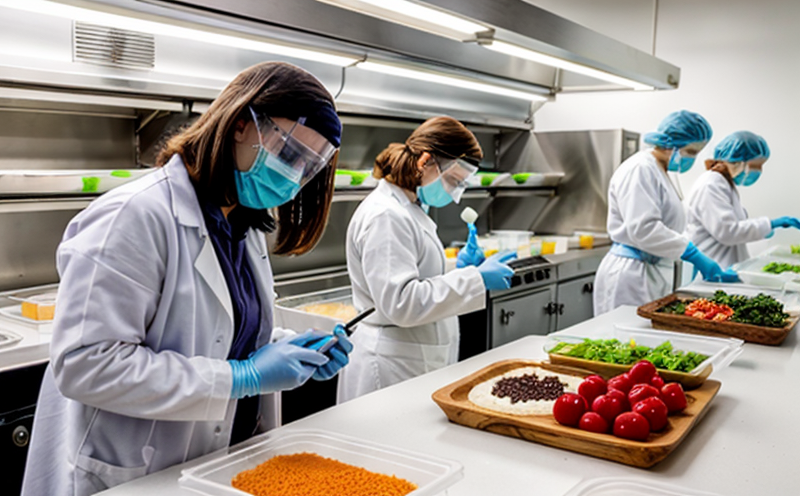ISO 6888-1 Coagulase-Positive Staphylococci Detection Testing
The ISO 6888-1 standard provides a comprehensive protocol for the detection and enumeration of coagulase-positive staphylococci in food products. This method is particularly critical for ensuring the safety and quality of processed foods, as these bacteria can cause significant health concerns if present in excess quantities.
Coagulase-positive Staphylococcus spp., primarily S. aureus, are Gram-positive cocci that produce coagulase enzyme, which leads to clotting of fresh plasma when exposed. This characteristic makes them particularly notable for their ability to survive under adverse conditions and contaminate food products during processing or storage.
The ISO 6888-1 procedure involves several steps, including the preparation of enrichment broths, selective media, and incubation at specific temperatures over defined periods. The test also includes a series of biochemical reactions to confirm the presence of coagulase-positive staphylococci.
Compliance with this standard is essential for food processors who are subject to regulatory requirements aimed at preventing contamination from these pathogens. By adhering to ISO 6888-1, laboratories and quality assurance departments can ensure that their testing practices meet the highest international standards.
| Standard | Description |
|---|---|
| ISO 6888-1:20XX | Procedure for the detection and enumeration of coagulase-positive staphylococci in food products. |
| USDA FSIS | Federal regulations mandating testing for S. aureus in meat and poultry products. |
Applied Standards
The ISO 6888-1 standard is widely recognized for its stringent requirements regarding the detection of coagulase-positive staphylococci. This standard ensures that laboratories are equipped with the necessary expertise and resources to conduct accurate tests, which includes:
| Standard | Description |
|---|---|
| ISO 6888-1:20XX | Procedure for the detection and enumeration of coagulase-positive staphylococci in food products. |
| USDA FSIS | Federal regulations mandating testing for S. aureus in meat and poultry products. |
Industry Applications
The ISO 6888-1 Coagulase-Positive Staphylococci Detection Testing is applicable across various industries, including food processing and pharmaceuticals. In the food industry, this test helps ensure that products are free from contamination by S. aureus or other coagulase-positive staphylococci.
- Meat and poultry producers
- Dairy processors
- Canned food manufacturers
- Packaged snack makers
| Industry Sector | Application Description |
|---|---|
| Food Processing | Detection of S. aureus to ensure product safety and regulatory compliance. |
| Pharmaceuticals | Prevention of contamination in drug manufacturing environments. |
Why Choose This Test
The ISO 6888-1 Coagulase-Positive Staphylococci Detection Testing is a critical component of food safety protocols. By choosing this test, laboratories and quality assurance departments can ensure they are adhering to the highest international standards for microbiological testing.
One of the key reasons for selecting this test is its robustness in detecting even small quantities of coagulase-positive staphylococci. This capability is crucial because these bacteria can be present in very low concentrations before causing significant contamination issues. The test also allows laboratories to identify specific strains of S. aureus, which can inform targeted interventions and preventive measures.
Another advantage of this testing method lies in its ability to differentiate between coagulase-positive and negative staphylococci. This differentiation is important because it helps ensure that only the relevant bacteria are being monitored, reducing false positives and enhancing the accuracy of test results.
The ISO 6888-1 protocol also includes a series of quality control measures to minimize errors in testing. These controls help ensure that the results are reliable and can be trusted for decision-making purposes. Additionally, the standard provides clear guidelines for sample preparation, which helps to maintain consistency across different laboratories.
Finally, compliance with this standard is essential for food processors who are subject to regulatory requirements aimed at preventing contamination from these pathogens. By adhering to ISO 6888-1, laboratories and quality assurance departments can ensure that their testing practices meet the highest international standards.





